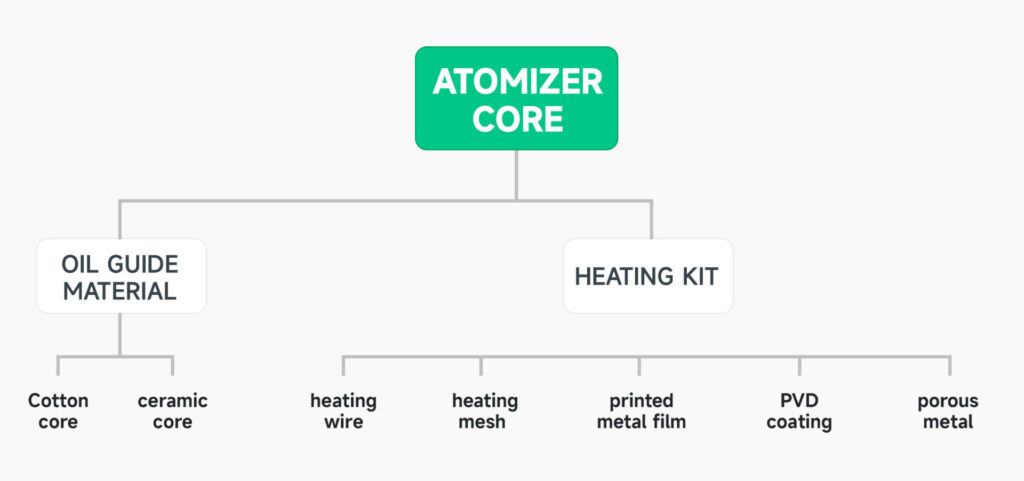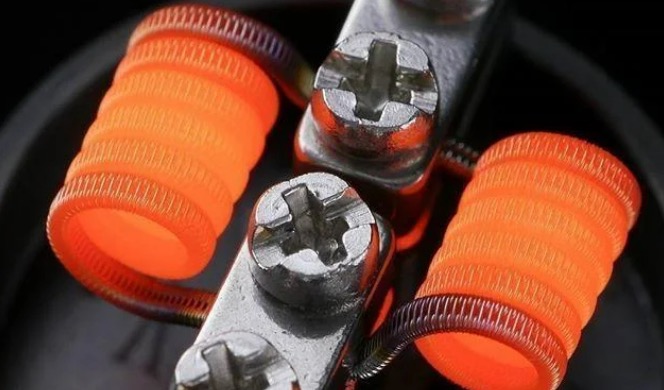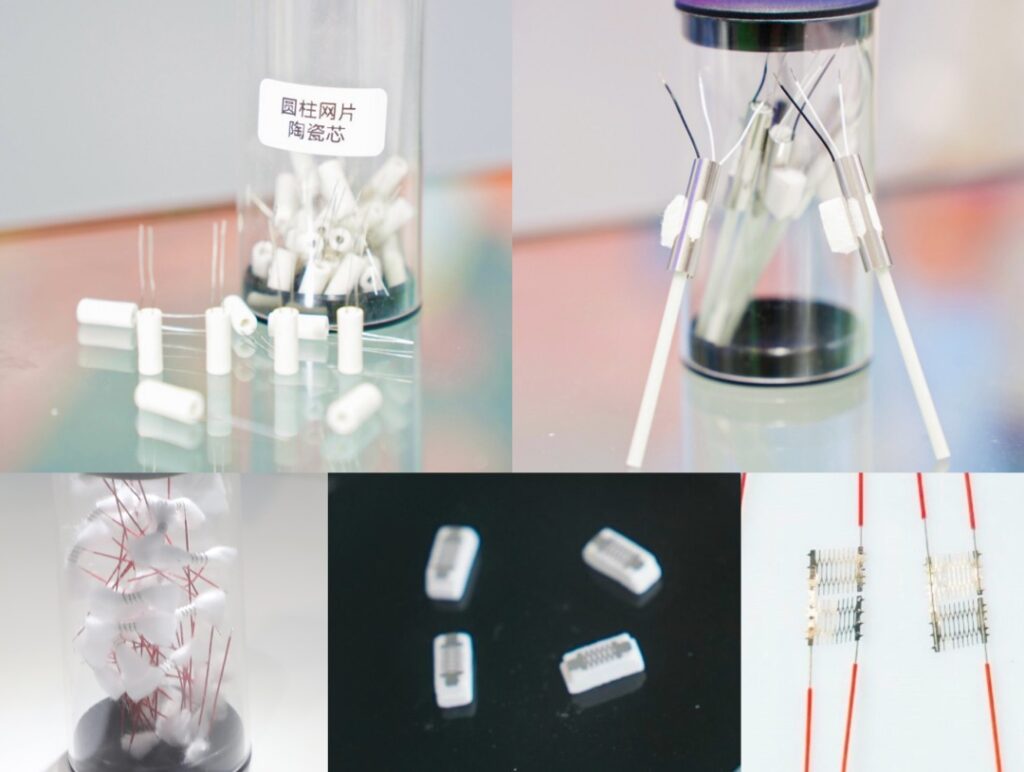Digital Display
Digital Display
The atomizing core can be called the soul of e-cigarettes. It is the place where e-liquid is atomized and is one of the important factors affecting the taste experience of e-cigarettes. From a structural point of view, the atomizer core is mainly composed of two parts, namely the heating element and the oil-conducting material.

The heating element is one of the core components of e-cigarettes. Its core function is to heat and effectively atomize e-liquid. The basic principle is that the battery supplies power to the heating element component. The resistance wire heats up the e-liquid and its dissolved substances around the resistance wire. Volatilizes to form smoke, allowing smokers to achieve the effect of puffing up smoke.
The industry generally calls it heating wire. In fact, in addition to filament, the heating element can also be in the form of sheet, mesh, or even a layer of metal film. The shapes are different and the production processes are also different.
For example, heating wire is prepared by drawing process; MESH mesh is generally prepared by etching process; metal heating film is prepared by thick film printing + high temperature sintering process.
In terms of materials, heating elements include iron-chromium-aluminum alloy, nickel-chromium alloy, pure nickel wire, stainless steel, titanium alloy (uncommon), etc.
Some requirements for heating elements include: high temperature resistance, stable physical and chemical properties at high temperatures, and no release of harmful substances at high temperatures.
The resistance of the heating element: The resistance of the heating wire largely determines the size and taste of the smoke. Use low-resistance heating wires to pursue large smoke, and use high-resistance heating wires to pursue taste restoration. When the length of the heating wire is the same, the thicker the heating wire, the smaller the resistance; when the thickness of the heating wire is the same, the shorter the heating wire, the smaller the resistance. Generally speaking, the heating wire resistance value between 0.2-1.0 is a large smoke type, and the resistance value greater than 1.0 is a taste type.
Principle of heating element: Resistance heating uses the Joule effect of current flowing through a conductor to generate heat energy, thereby heating the liquid for atomization.

Joule’s Law is a law that quantitatively explains the conversion of electrical energy into heat energy by conduction current. The content is: The heat generated by current passing through a conductor is proportional to the square of the current, proportional to the resistance of the conductor, and proportional to the time of electricity. The mathematical expression of Joule’s law: Q=I²Rt; for a purely resistive circuit, it can be derived: Q=W=Pt; Q=UIt; Q=(U²/R)t.
Among them, Q refers to heat, the unit is joule (J), I refers to current, the unit is ampere (A), R refers to resistance, the unit is ohm (Ω), t refers to time, the unit is second (s), all the above units are used It is a unit in the International System of Units.
According to the different oil-conducting materials, atomizer cores are divided into two categories, namely cotton cores and ceramic cores.
Cotton core: The early form was heating wire wrapped around cotton or fiberglass rope. Nowadays, etched mesh wrapped with cotton is popular. Among them, cotton materials include natural cotton, linen, cellulose, organic, inorganic, synthetic and other categories. The cotton core is characterized by high degree of reduction and strong atomization explosive power.

Ceramic core: According to unverifiable claims, the earliest ceramic core was used in CBD. Later, in 18 years, the reloadable vapes emerged. Ceramic cores represented by FEELM experienced a wave of industry climax. In terms of form, different ceramic cores mainly depend on the embedding method of the heating element, such as vertical hair, horizontal hair, thick film printing, steel sheet embedded, etc.
The material is a kind of porous ceramic. Ceramic core is characterized by delicate taste and good consistency.